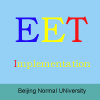-
Formative assessment
普通类 -
- 支持
- 批判
- 提问
- 解释
- 补充
- 删除
-
-
Formative assessment
ASSESSMENT CAN ACCOMPLISH MORE than simply determining student progress—they can actually motivate students to learn. Yet summative assessments in such forms as end-of-chapter tests, final exams, and high stakes tests (ACT and SAT) do not generally motivate students. In fact, these tests often intimidate lower-achieving students. Formative assessment, however, sometimes referred to as on-going assessment or assessment for learning, when properly implemented, can be a powerful means of improving student learning.-
What is Formative Assessment?
In order to qualify as formative assessment, the information/evidence obtained through testing procedures must be used to modify teaching and learning activities to meet student needs. Instructors must provide students with feedback and teach them to use it effectively for learning. This includes guiding students to self-assess so that they can learn what they need to do to achieve success.
Successful formative assessment activity requires that the student be involved. The feedback must include three elements: recognition by the student of the desired goal, evidence about the student's present position, and some understanding of the way to close the gap between the goal and the present position.-
Research Findings
click play button > to start
Through an extensive research review, Black and Wiliam (1998) provide solid evidence that innovations that include strengthening the practice of formative assessment produce significant and often substantial learning gains. Additionally, they concluded that improved formative assessment helps lower achievers, including those with disabilities, more than other students. Formative assessment provides, therefore, a means of narrowing the gap between low and high achievers while raising overall achievement.
-
Formative Assessment Activities
Many activities can provide formative assessment. The following are three possibilities suggested by Stiggins and Chappuis (2005)

Students use a collection of their self-assessments to summarize their learning and set goals for future learning.
Engage students in reviewing strong and weak samples in order to determine attributes of a good performance or product. Students work in pairs to revise an anonymous weak work sample they have just evaluated.-
More Information
The Assessment Training Institute
Assessment Toolkit for Educators
(Northwest Regional Educational Laboratory)-
Author
Carol Cerny, Graduate Student
SDSU Instructional Technology Program
Cerny, C. (2005). Formative Assessment. In B. Hoffman (Ed.), Encyclopedia of Educational Technology. -
-
- 标签:
- students.
- assessment
- evidence
- student
- activities
- students
- learning.
- learning
- formative
-
加入的知识群:



学习元评论 (0条)
聪明如你,不妨在这 发表你的看法与心得 ~